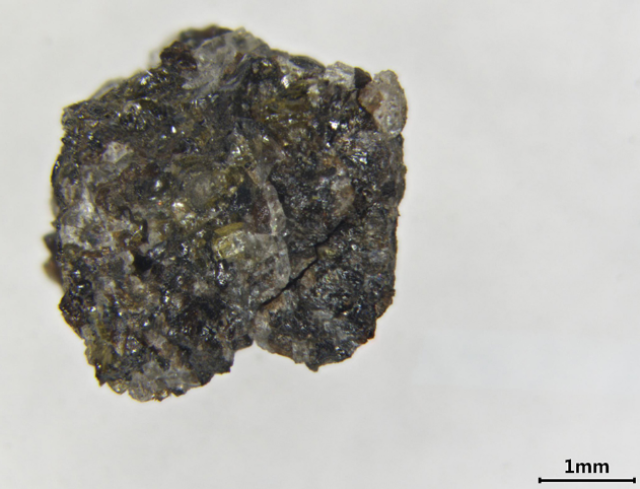The presence of these rocks in the Moon's mantle explains how its bowels showed volcanic activity 2 billion years ago, the Chinese Academy of Sciences reportedTASS, October 21.
Chinese planetary scientists have found traces of fusible mantle rocks in soil samples delivered to Earth by the Chang'e-5 mission, which contributed to the preservation of a high level of volcanic activity on the Moon for at least 2.5 billion years of its existence. This was announced on Friday by the press service of the headquarters of the Chinese Academy of Sciences (KAN).
"Scientists have found that samples of the youngest volcanic rocks from Chang'e-5 contain relatively many titanium and calcium oxides, which makes them more fusible compared to older samples collected by the astronauts of the Apollo program. The presence of these rocks in the Moon's mantle explains how its bowels showed volcanic activity 2 billion years ago," the report says.
In November 2020, the Changzheng-5 launch vehicle was launched from the Wenchang Cosmodrome on Hainan Island. She sent the Chang'e-5 spacecraft to the Moon, which returned to Earth about 23 days after launch, collecting about 2 kg of lunar rock for study by Chinese specialists both for scientific purposes and for a project to prepare for the construction of a research base.
A group of Chinese planetary scientists led by Yi Chen, a professor at the KANG Institute of Geology and Geophysics in Beijing, used these rock samples to uncover the history of lunar volcanic activity and solve one of the most interesting geological mysteries of the Earth's only natural satellite.
Volcanic history of the Moon
The fact is that a year ago, researchers discovered that the age of some samples of volcanic rocks delivered by Chang'e-5 to Earth was about 2 billion years. This was a big surprise for planetary scientists, since this discovery contradicted generally accepted ideas about the behavior of the bowels of the Moon and the history of its volcanic activity.
"The existence of volcanism in this epoch requires that the mantle of the Moon at this time remained in a partially molten state. In theory, this could happen for two reasons - the bowels of the Moon were hotter than we thought, or the mantle rocks were more fusible. To get an answer to this question, we tried to determine the temperatures and pressures at which the samples we studied were formed," explained Professor Yi Chen, whose words are quoted by the press service of the KANG headquarters.
Guided by this idea, the scientists selected grains of volcanic rocks from the Chang'e-5 samples and studied their mineral and chemical composition, as well as measured their typical age. The analysis carried out by the researchers showed that the youngest fragments of volcanic rocks contained relatively little magnesium oxide, but at the same time they contained relatively many oxides of titanium and calcium.
The presence of these substances in the Moon's mantle, as the researchers note, significantly reduced the temperature at which its rocks could remain liquid. This potentially explains why the Earth's natural satellite has been showing volcanic activity for much longer than was thought possible in the past, Professor Yi Chen and his colleagues summed up.

